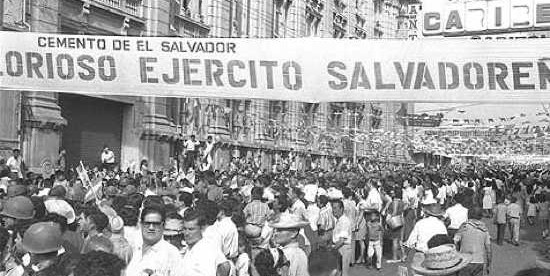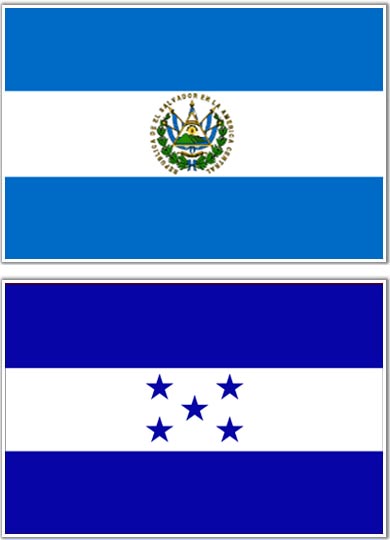The Soccer Match that Sparked a War


The 1970 FIFA World Cup has a few unique claims it can make. It was the first and only time that Israel qualified for the final stage. It was also the only time that Argentina failed to qualify. And it was, to date, the only time that the qualification rounds helped spark a war.
Starting in 1968, twelve nations from the Confederation of North, Central America, and Caribbean Association Football (more commonly known as CONCACAF) began a series of 32 matches to determine which would qualify for the World Cup’s final stage. Organizers arranged the nations into four groups of three teams each, with each team playing a home-and-away series against the other two in their group. The four nations that won their groups advanced to a home-and-away playoff. Honduras, the winners of Group 3, therefore ended up playing El Salvador, the winner of Group 4, in the semi-finals.
But Honduras and El Salvador were not on good terms at the time. Over the fifty or so years before, many Salvadorans — perhaps as many as 300,000 — had moved into Honduras, mostly working as low-wage migrant workers on various Honduran farms. The Honduran rank-and-file were upset, as the Salvadorans were (in their minds) taking their jobs. El Salvador’s government had accused Honduras of engaging in genocide, claiming that Hondurans discriminated against Salvadorans by taking their land and effectively expelling them from Honduras. Tensions between the two nations were high, and soccer became the spark that set off a fire.
The Honduras/El Salvador matches were plagued with violence. On June 8, 1969, Honduras hosted and won the first match, 1-0, but fans of the two nations fought in the stands. A week later, the two met again in El Salvador, and the host nation won 3-0 — but, again, fans of both teams turned toward violence. And because neither nation swept the other, a tie-breaking game was needed. On June 26, 1969, the two sides met in Mexico City, with the winning team moving to the CONCACAF finals against Haiti, and the loser waiting for the 1974 Cup. On the day of the game, though, El Salvador cut off diplomatic relations with Honduras. And then, the Salvadorans triumphed, beating the Hondurans 3-2 in extra time.
Honduras was not pleased. The two nations shut down the border and, according to About.com, “border skirmishes began on a regular basis.” This continued for weeks until finally, on July 14th, the animosity bubbled over. El Salvador’s air force began striking Honduras, paving the way for a ground invasion; Honduras responded with strikes of its own. Over the next few days, the Organization of American States worked to restore peace in the region, and the two sides reached a cease fire on July 20th (after OSA threatened El Salvador with sanctions for occupying parts of Honduras). But as the Telegraph reported, the human toll of what would later be called “the Football War” was significant: “approximately 1,000 to 2,000 people had lost their lives and 100,000 more had become refugees.”
El Salvador ended up beating Haiti in the CONCACAF finals, thereby advancing to the World Cup. They were the worst-performing nation in the tournament, losing all three of their matches, giving up nine total goals while scoring none.
 Bonus Fact: As of 2012, Honduras had the largest murder (“intentional homicide”) rate per capita, at 90.4 per 100,000 people. (This easily topped the next-highest on the list, Venezuela, which had a murder rate of 53.7 per 100,000.) Despite the fact that Honduras has only about 8 million residents, the BBC estimates that a person is murdered there every 74 minutes. (That link auto-plays a video.)
Bonus Fact: As of 2012, Honduras had the largest murder (“intentional homicide”) rate per capita, at 90.4 per 100,000 people. (This easily topped the next-highest on the list, Venezuela, which had a murder rate of 53.7 per 100,000.) Despite the fact that Honduras has only about 8 million residents, the BBC estimates that a person is murdered there every 74 minutes. (That link auto-plays a video.)
Take the Quiz!: Name all seven of the Central American nations. (If you don’t get at least two of them right, you might want to re-read the above.)
From the Archives: Sometimes, To Win, You Have to Play to Lose: The strangest soccer game ever played.
Related: “Eight World Cups: My Journey through the Beauty and Dark Side of Soccer” by George Vescey. 4 stars on 31 reviews.
